: DOMDocument::loadHTML(): ID conclusion already defined in Entity, line: 138 in
Last Updated: November 9, 2022
A gig is referred to as a temporary job completed by a freelance worker. Some say the “gig” trend emerged as a direct consequence of the global financial crisis, while others agree that it is a clear manifestation of millennial psychology that values a flexible work schedule over the security and perks of a full-time job.
So, in a broader sense, the gig economy model consists of a workforce environment where organizations with temporary positions contract independent workers for short-term engagements. Statista reports that over 50% of the US workforce is likely to participate in the gig economy by 2027.
We are seeing the gig economy utilized in a range of roles from junior admins, and concierges, to highly skilled jobs such as website designers and developers. It is also visible at the executive level, even the executive positions such as CFOs and CTOs are now being filled in on a gig basis.
If you are interested in stepping into the gig economy, this article includes the best practices for both workers and businesses.
How to Thrive in The Gig Economy
The gig economy is finding a voice in all the major industries, but it is with the government and business services, where project-based work is the modus operandi, that the Gig economy has found the greatest success. It is worth noting that in the gig economy, much of the risk associated with an organization is transferred to the freelancer.
This goes against the conventional 9-5, a secure arrangement that corporate employees had hitherto enjoyed for a long time now. The priorities are certainly shifting now. Keen to improve their bottom line, organizations are turning to such measures as cost-cutting, salary pruning, and offshoring that threaten to take away the economic security of the average person.
This scenario strengthens one’s belief that it’s worthwhile to ‘build one’s own brand’ as we move into the future. An underlying cause for the growing interest in the gig economy can be attributed to the modern workforce’s desire to work without bosses. People are much happier working for apps. Take for instance the ride-hailing and home delivery services. Moreover, we have several blue-collar and white-collar marketplaces such as Handy, Angi, Task Rabbit, Thumbtack, Fivver and UpWork that operate on gig business models.
They have created a whole new market and an affluent one at that. On the face of it, software technology or the marketplace that powers gig-based operations looks like the life force of the gig economy. Thus, it is imperative for business owners to properly assess their gigs marketplace technology.
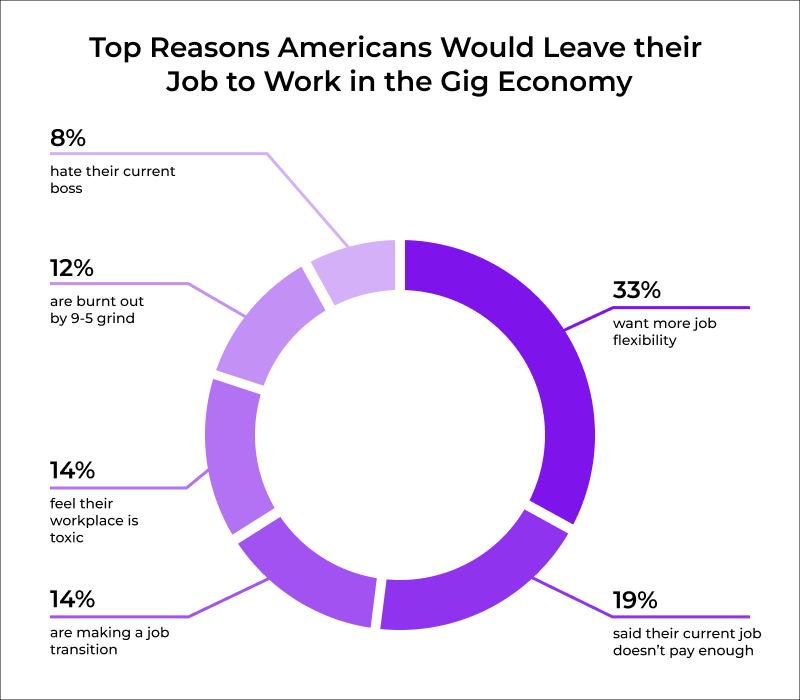
Gig Economy Best Practices for Workers and Businesses
Whether you are an employee who wishes to take advantage of the gig economy or a business that is planning to outsource its work to a freelancer, we have compiled a list of the best practices for both parties. Let’s have a look.
For Businesses
Succeeding in the gig economy depends a lot on the owners’ understanding of the current market situation and the major pain points of the freelance community. Following are a few crucial ways businesses can look to satiate the demands of the growing gig economy.
Identifying the Requirements and Gaps
Businesses should evaluate their upcoming projects and workload for the year ahead. They should keep in mind the requirements in terms of market knowledge, technical capabilities, and strategic expertise and check if the skills required exist within their current team or not. If not, consulting a freelance platform to patch the company’s gaps is an ideal option without adding unnecessary headcount.
Embracing Continuous Improvement
One of the best ways to thrive in the gig economy as a business owner is to embrace the concept of continuous improvement. It immediately adds diversity and opens up the market. But true innovation isn’t without challenges. You’d have to make plans to counter the difficulties of dealing with global partners and implement a strong operational process that simplifies onboarding, communication, payments, and more.
Consider the timeline (shown below) of Fiverr, an online marketplace for on-demand freelance services, and observe how it improved its value proposition over the years.
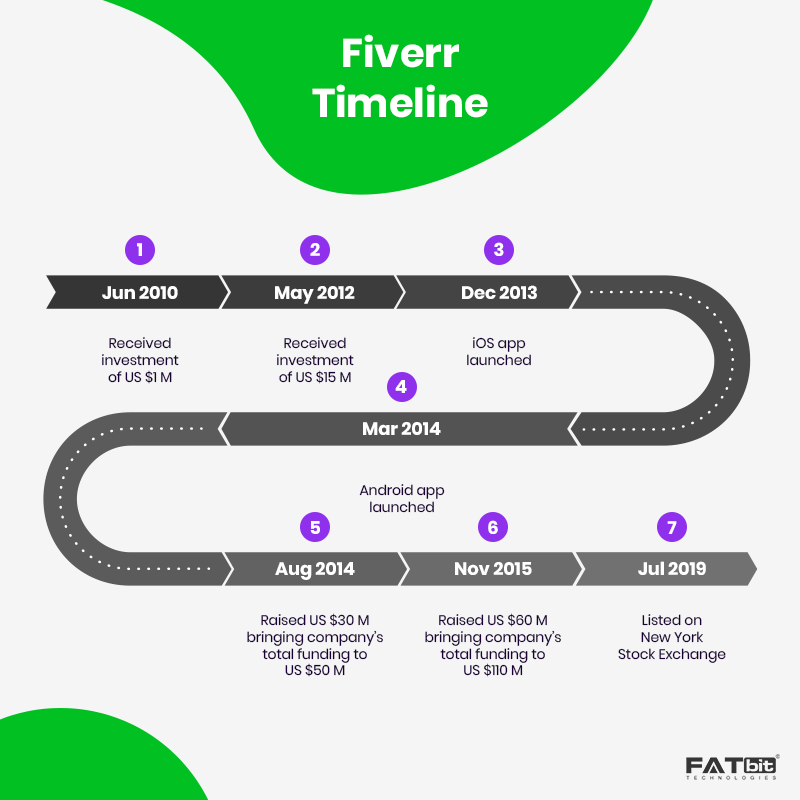 Fiverr Timeline
Fiverr Timeline
Information Source – Wikipedia, Graphic Credit – FATbit
Using an Established Platform
Ad hoc workforce management can become profusely troublesome unless a well-run, venture-backed technology platform is used. It makes it easier for the business and employees to work together. An established outsourcing platform maintains stable and vetted talent making it easy to post ads, evaluate proposals, and candidates, and manage the logistics of projects and payments.
Community Building
Many of the benefits that come from working in a team environment are absent in the gig economy. Freelancers are on their own to conjure up their creative genius. That’s where the owner of a gig economy business can swoop in and look to create a sense of community by connecting freelancers with each other.
Setting up a LinkedIn group or organizing global meetups could strengthen the community. A content and appreciated group of freelancers will recommend you to their peers and help popularize your business in the industry.
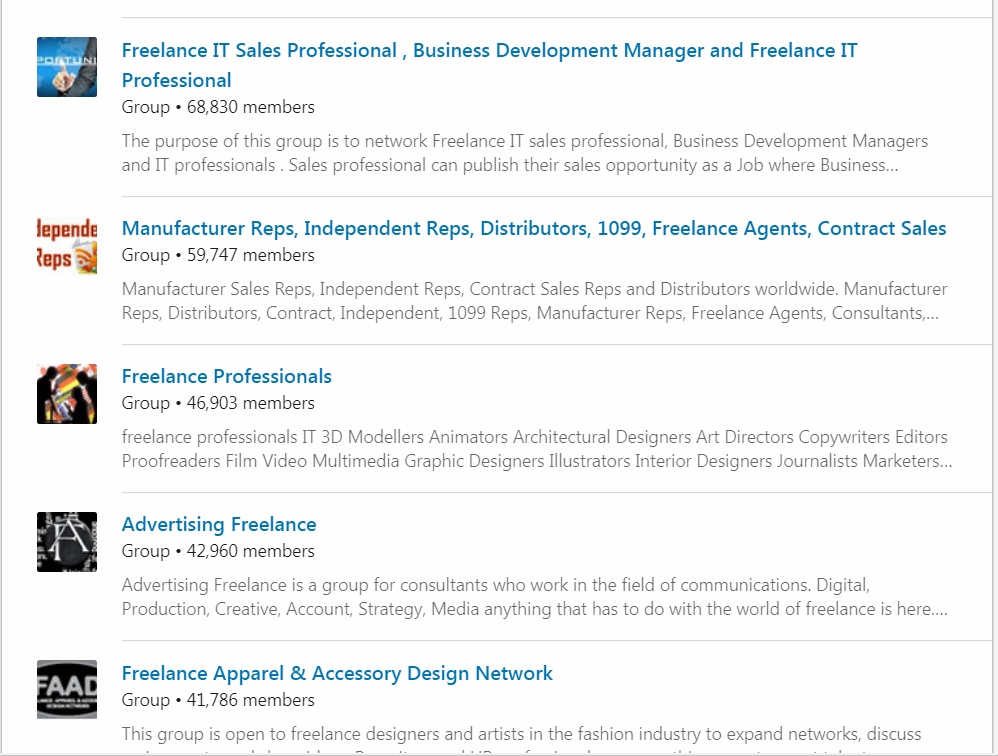 LinkedIn Groups for Freelance Professionals
LinkedIn Groups for Freelance Professionals
Having a Long-Term Vision of a Blended Workforce
As it is suggested to plan the hiring strategy at least a year ahead of time, consider how the on-demand workforce factors into the equation. Planning out the needs and availability clearly will give you a clear picture of the experts required on a project-by-project basis and full-time employment. Accordingly, the hiring team can become agile while hiring freelancers and strategic for full-time employees. Especially if they use a solution like Salarship to hire.
Keeping Things Simple
Freelancers are a busy and self-sufficient lot. They are often juggling multiple things at a time from marketing and customer support to financial planning and more. As such, they have little room to cram more activities into an already busy schedule. It is a good idea to avoid sharing a lengthy version of the terms and conditions.
An attempt should be to make it easy for freelancers to work with you. A marketplace for freelance professionals that is self-intuitive and easily manageable is often the most successful. For example, Uber allows its drivers to set their availability, interact with passengers, and manage their accounts all with ease.
Making On-time Payments
For most people, gigs are a way to earn quick income by doing something they love without expending all their energies. That is considering they are paid on time. The last thing a freelancer wants is a payment delay for the services offered. It is crucial therefore that you transfer payments on time, especially to global partners to keep your goodwill intact.
A great way to enable quick and reliable payments is to invest in a global automated payment system such as Stripe Connect or Paypal Adaptive.
Note: Stripe Connect and Paypal Adaptive are the recommended payment gateways for marketplace models where automatic split-payment is essential.
Become the Next Leader of the On-demand Economy
For Workers
Regardless of the type of work, freelance workers feel a host of personal, economic, and social anxieties without the support of an employer. That being said, working as a freelancer is their own choice and they do not prefer to give up the benefits that come along. However, there are certain strategies to navigate the emotional ups and downs and gain the energy to work as a successful freelancer. Let’s have a look at them:
Building Routines
Building a routine enhances focus and performance. There are work-specific and personal routines. Work-specific routines include keeping a schedule, starting the day with the most challenging work, and following a to-do list which can improve productivity and focus. Building personal routines like incorporating self-care, sleep, nutrition, and workout enhances people’s sense of order and control in uncertain conditions.
Socializing
As humans are social creatures, loneliness can be devastating to the success of independent workers. Developing cordial relationships with like-minded professionals and people in similar fields at a local co-working space can significantly help freelancers in challenging times and take necessary risks.
Setting up Workspaces
Disconnection from a corporate office can become a downfall for many freelancers. Many freelancers fail because they don’t create a proper working environment. Gig work is often portable, so creating a space for productive work helps prevent feelings of rootlessness. It is also a driving factor in the rise of coworking spaces around the globe.
Benefits of Gig Economy for Workers and Businesses
For Businesses
Pros
- When looking for the right gig worker, employers do not need to limit themselves to their own city or town. The gig economy lets the businesses cast a wider net to have an improved chance of finding the best-fit candidate.
- The gig economy allows employers to hire ad hoc only when there is a requirement and prevents them from paying salaries to full-time employees when there is no project/income.
For Workers
Pros
- The traditional Monday to Friday nine-to-five may not work for all workers because of family commitments and other chores. The flexible schedule is the true essence of the gig business model allowing the workers to do what they want and when they want.
- The gig economy allows the workers to explore their true selves while maintaining the security of their regular job. Workers can work on that part of the pursuit for as little or as much without taking that leap of faith and quitting jobs.
- Gig jobs let workers ask for the desired salary which is not possible in traditional jobs. Workers can even decline the job if the employers are not willing to pay their worth.
Opportunity to Start Your Own Online Venture in Gig Economy – The Marketplace Model
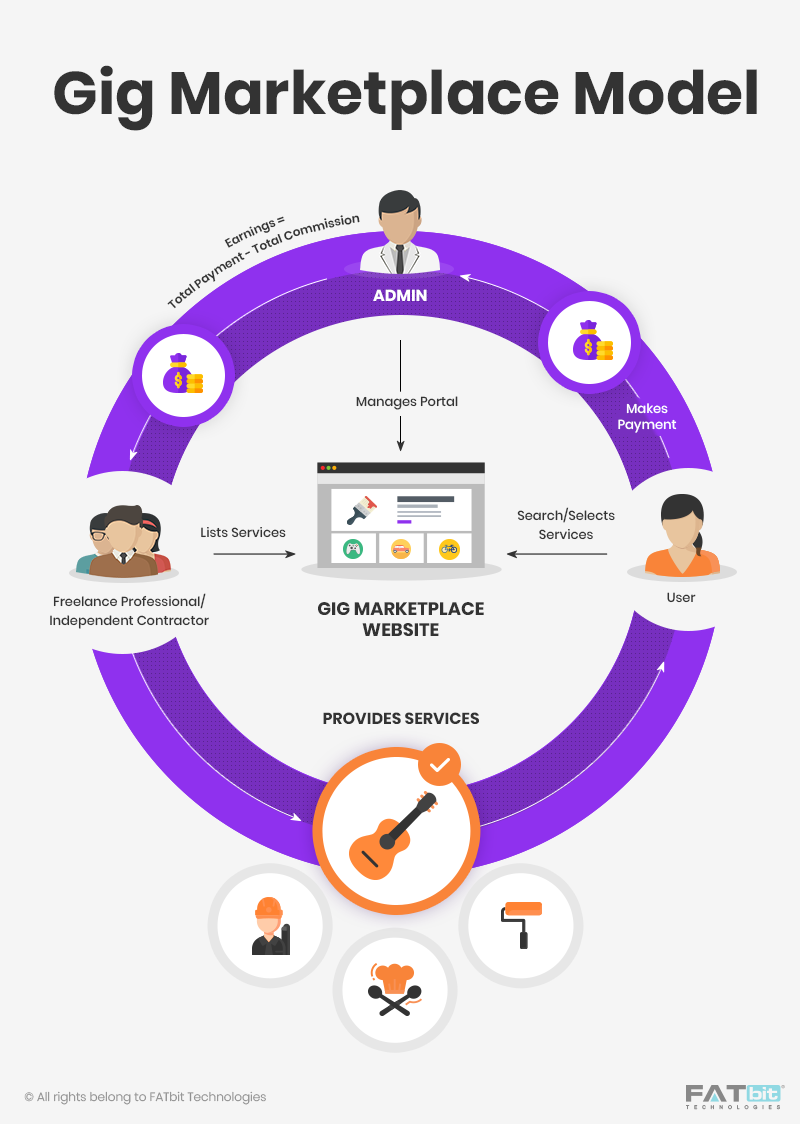
An on-demand business marketplace within the gig economy revolves around 4 main entities. The admin, gig marketplace website, service provider, and freelance professional/independent contractors. An admin controls the website to bridge the gap between service providers and freelance professionals. For that service, the admin earns a percentage for every successful transaction in the form of a commission.
A freelance gig marketplace is where all the magic happens. Service providers set up their accounts on the website to advertise their services/products along with helpful information. Independent contractors are central to the success of a portal. They visit the website, look up the products and place the order as per their requirement.
The more independent contractors a portal has the more likelihood of transactions and eventually greater chances of growth and success. Payment for the gig is transferred to the service provider after subtracting the admin’s share of the commission.
How to Get Started with Marketplace Solutions in Gig Economy?
If you have decided to get your feet wet in the gig economy, then here are a few market-ready solutions worth looking at.
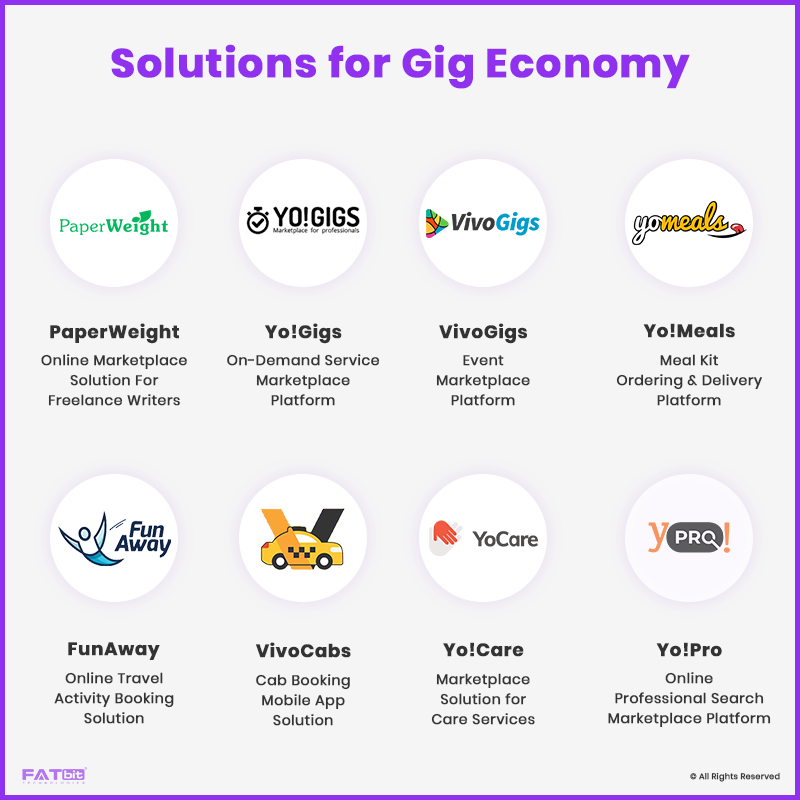
Yo!Gigs – Online Service Marketplace Software
- Earn profit by bridging the gap between service-seekers and freelance professionals/service-providers.
- Turnkey solution to build service marketplaces like TaskRabbit, Fiverr, Thumbtack, Upwork.
- Benefit from market readiness, scalability, quick setup, and multiple revenue generation options.
PaperWeight – Online Marketplace Solution For Freelance Writers
- Comparison of freelance writers on experience, skills, & ratings.
- Easy payments with eWallet.
- Monetization options like banner ads and sponsored writers.
VivoGigs – Event Marketplace Platform
- An ideal solution to build a Marketplace for event organizers and performers.
- Customizable as per the business model and other strategic goals.
- Highlight features include reviews and rating systems, gig posting, and social media integration.
Yo!Meals – Meal Kit Ordering & Delivery Platform
- An off-the-shelf solution to launch an online meal ordering and delivery portals like Blue Apron, Hello Fresh, and more.
- Offers robust features to enable entrepreneurs to manage the website with ease.
- Responsive design, meal catalog management, location-based search, e-wallet, rating & review system, social media sharing, and more.
FunAway – Online Travel Activity Booking Solution
- A readymade solution to launch a travel activity booking marketplace.
- Brings travel enthusiasts and local vendors close to each other.
- Responsive design, multiple revenue streams, user-friendly booking management, social media integration, and much more.
VivoCabs – Cab Booking Mobile App Solution
- Packs feature backed by market analysis.
- Engaging user-experiencing to make the app a joy to explore.
- Offers live-ride tracking, fare estimate, review & rating system, push notifications, and more.
Yo!Care – Marketplace Solution for Care Services
- Kickstart marketplace for care services like senior care, pet care, and more.
- Economical investment solution with hi-performance features.
- Completely customizable and mobile-friendly design.
Yo!Pro – Online Professional Search Marketplace Platform
- A feature-rich solution to enable maximum growth.
- Built using open source technologies and scalable.
- Offers a simplified content management system (CMS), responsive design, and more.
Final Thoughts
In the gig economy, the key to success lies in companies’ ability to understand the immediate needs of freelancers and find ways to nurture long-term relationships with them. The role of technology to surmount common obstacles be they payment-related or to facilitate the workflow will remain as crucial as ever.
FAQs
Q1. Who Are Some Leading Players In The Gig Economy?
Ans: Some leading players in the gig economy are Angi, Handy, TaskRabbit, and Thumbtack for blue-collar services, and Upwork, Fiverr and Freelancers.com for white-collar services.
2. Which is the Most Reputed Software to Launch a Gigs Marketplace?
Ans: The choice of software depends on your business preference. Basically, there are two common types of software, which are SaaS and self-hosted. If you are interested in self-hosted lifetime licensed software then Yo!Gigs appears to be a superior choice. It comes with advanced features like task management, user management, bidding management, tasker checklist, background verification and more. Plus, as Yo!Gigs also supports unlimited users and transactions, it can easily accommodate all levels of business growth.
3. What are some Gig-based Business Ideas that I can Start?
Ans: Some gig-based businesses with maximum business potential are homeservices marketplaces, handymen marketplaces, freelancers marketplaces, babysitters marketplaces and elderly care marketplaces.
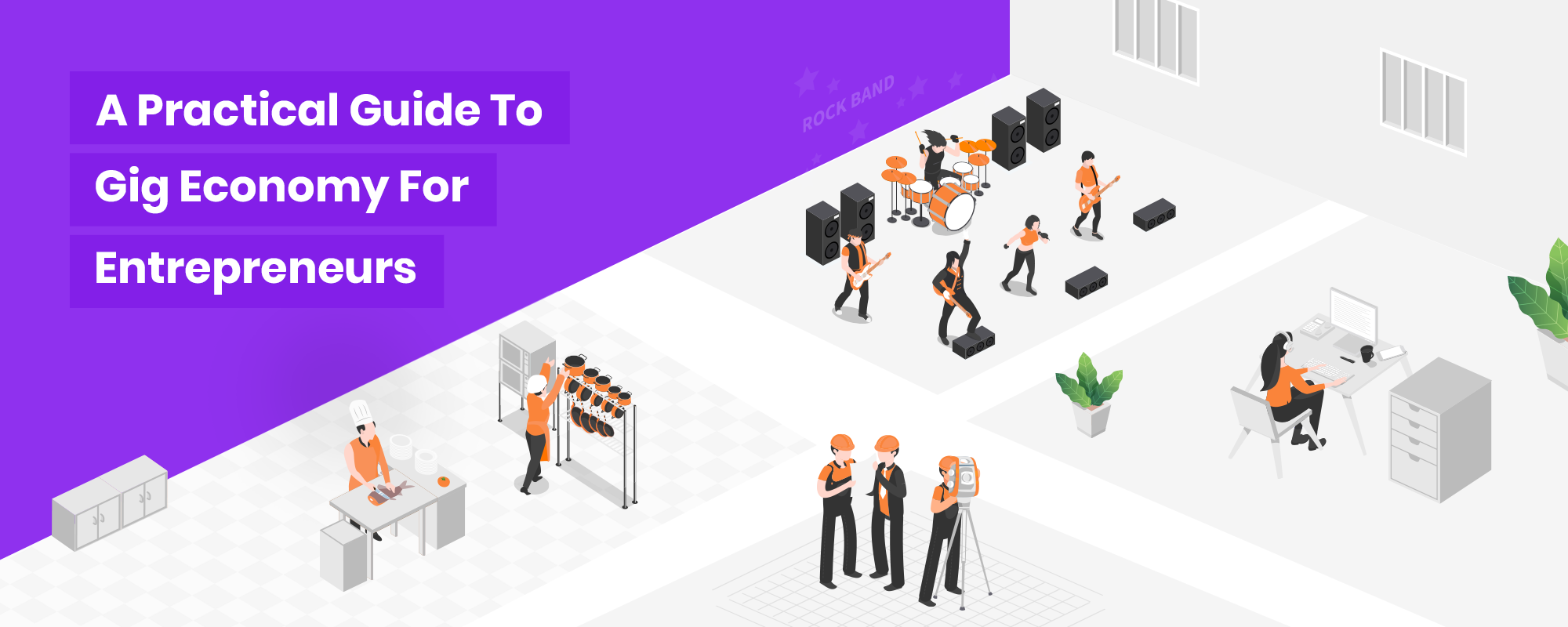

 Fiverr Timeline
Fiverr Timeline LinkedIn Groups for Freelance Professionals
LinkedIn Groups for Freelance Professionals


